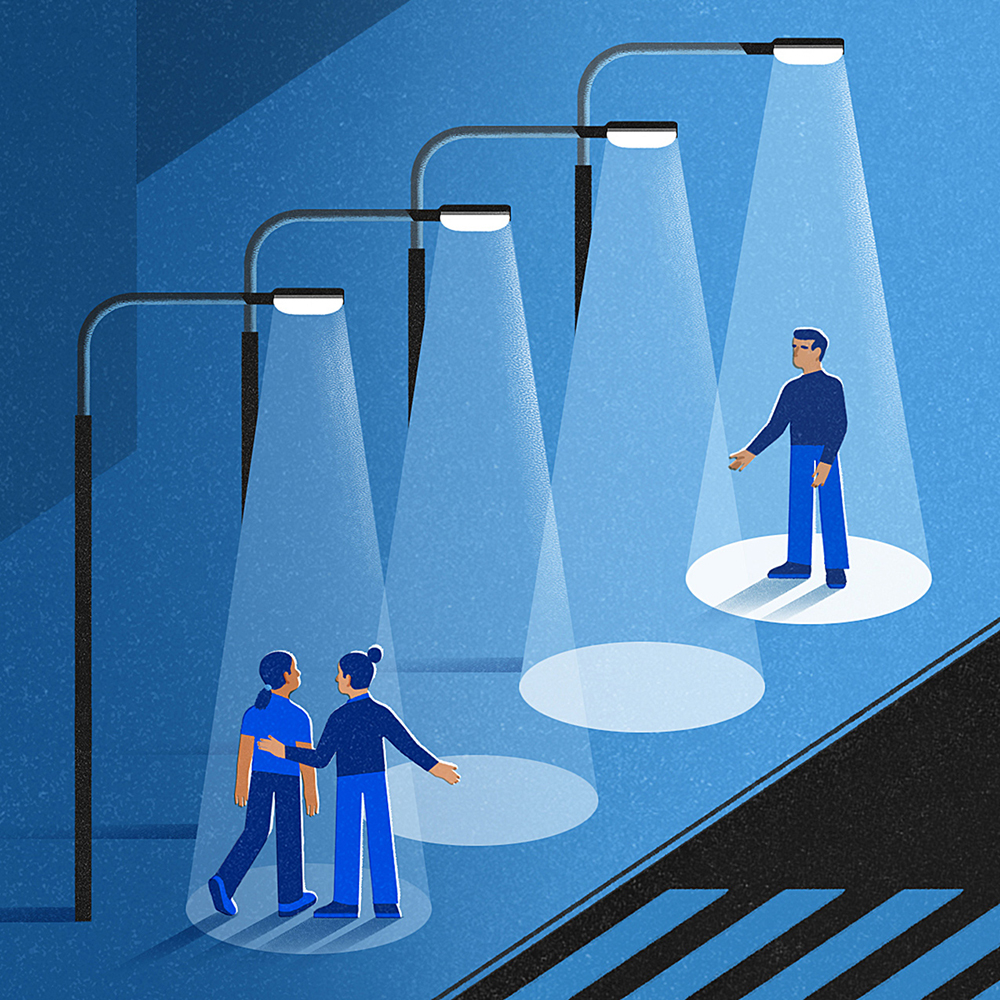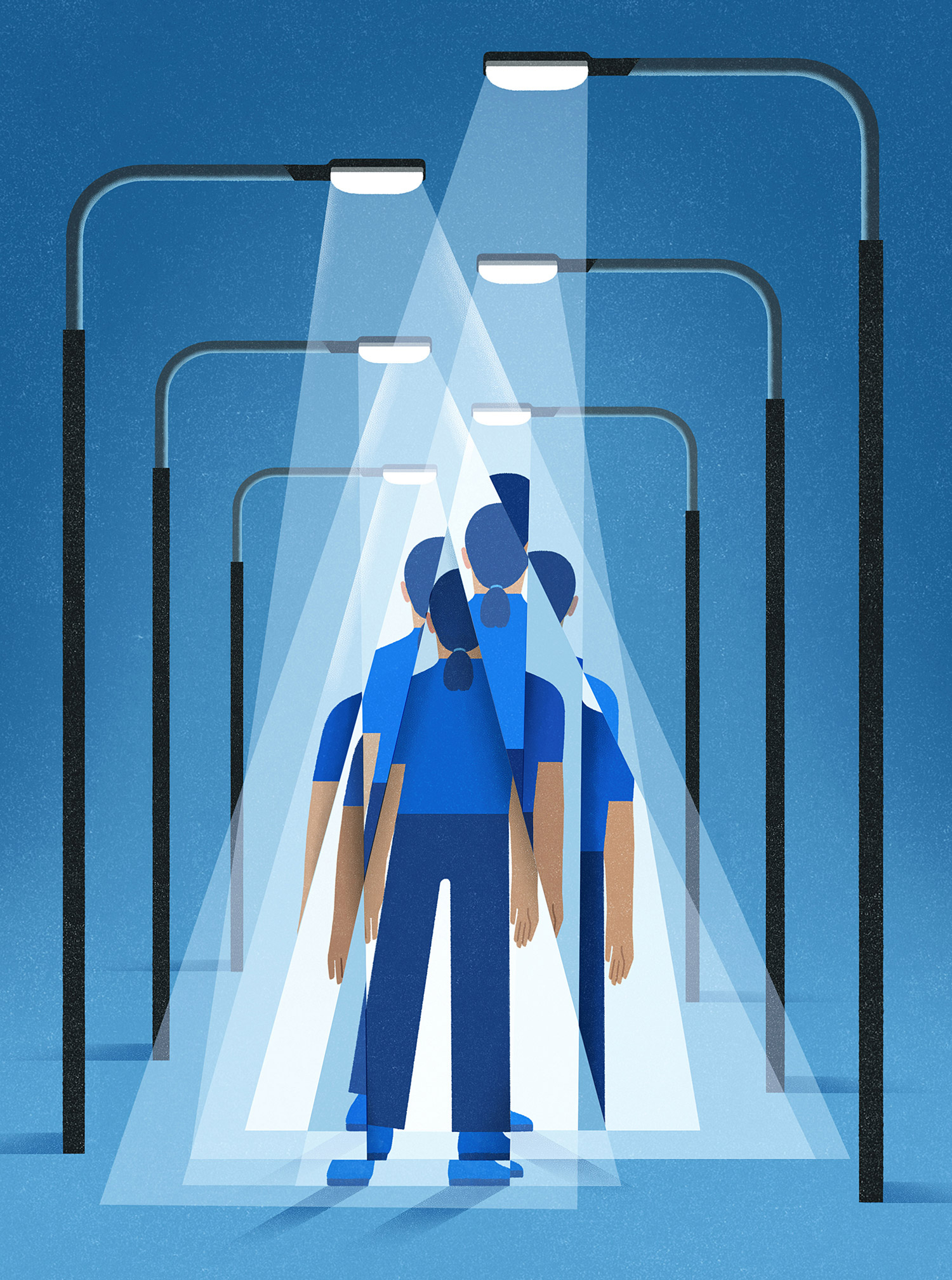John had been feeling tired for months. He didn’t have any energy or motivation, and he couldn’t keep up with his usual work and family obligations. What seemed to help was a few drinks in the evening. His wife thought he had a problem. So did his doctor, who gave it a fancy label: “alcohol use disorder.” They thought he needed treatment.
Actually, “John” doesn’t exist – he is part of a vignette that U of T researchers are using to assess people’s views toward addiction. After reading the vignette, people are asked a series of questions to tease out their beliefs. Is addiction a moral failing? Is it a consequence of trauma? A genetic predisposition? A disease?
Samantha Rundle, a recent PhD graduate from U of T’s department of psychology, is interested in the relationship between addiction and stigma. She is also interested in how stigma might act as a barrier to treatment for people like John and whether changing the way we talk about addiction can reduce it.
Rundle gave questionnaires to people after they read a vignette similar to the one above. Sometimes John was Jane, sometimes John/Jane had an addiction not to alcohol, but to opioids or gambling. Sometimes John/Jane had no addiction at all, but had diabetes. Rundle asked people to say whether statements such as “once someone has an addiction, they will always have an addiction” or “individuals with addiction lack moral standards” were true. In addition to 755 responses from the general public, she also got them from 109 people who had addictions, to measure self-stigma.
She found that in the survey of the public, people were more likely to align with what she calls the “psychological” model of addiction, which attributes addiction to past traumatic experiences, maladaptive coping mechanisms and other psychological deficiencies. People who view addiction through this model, she found, were less likely to stigmatize people with addictions. Those who view addiction through a “moral” model, which attributes addiction to weakness in character and bad choices, were more likely to stigmatize, she found.
“My main goal was to identify which models are related to less stigma,” says Rundle. “Maybe the way in which we talk about addictions and the way in which we learn about them and the way that they’re portrayed in the media need to be modified in order to have these people be OK to reach out to treatment programs.” In short, why not create messaging around addiction that reduces stigma, so that more people who need treatment will be willing to get it?
There is evidence that treatment can help a person overcome addiction. Some people defy stigma and seek that treatment out. But much is still unknown about exactly how different treatments work and what their effects in the brain really are. U of T researchers are examining those questions, pushing forward our understanding of how addiction works, one piece of the puzzle at a time.
According to Statistics Canada, about one in five Canadians will experience an addiction at some time in their life. Data from other sources suggest about three per cent of Canadians will use illegal drugs such as cocaine, ecstasy or heroin in any given year. Canadians using prescription medications such as opioid pain relievers, psychoactive drugs and stimulants also sometimes report problematic use. But alcohol, nicotine and cannabis remain Canada’s most-used problem drugs.
Addiction is a burden on the Canadian economy. According to the Centre for Addiction and Mental Health (CAMH), substance abuse disorders cost about $40 billion annually in additional health care and criminal justice expenses, and lost productivity. The personal cost – in misery, illness and death – is harder to put a number on.
Konstantine Zakzanis, a professor in the department of psychology at U of T Scarborough, and Tyler Brown, a master’s student in psychological clinical sciences, are interested in whether the cognitive abilities that are compromised during addiction – things like memory, concentration, decision making, planning and problem-solving – can be restored by treatment and abstinence. Most research addressing this question only looks at a snapshot in time. But Brown (under supervision from Zakzanis), has just launched a longitudinal study, to examine that question over an extended period. He has partnered with a private inpatient treatment facility, the Canadian Centre for Addictions; together they aim to follow at least 85 patients for several months. Testing and interviews when a person first arrives at the centre will establish their baseline.
Brown is interested not only in standard measures of cognition, but also the person’s mood, personality characteristics and ability to navigate daily life – things like personal care, shopping, cooking, housekeeping, banking, relationships and vocational activities. He knows that most people with substance use disorders are struggling with more than one substance, and he has embraced that in the study design.
The centre’s programs run for 30, 45, 60, 90 or 120 days, and they involve counselling, social support and activities such as yoga, art therapy and group walks. On day 30, all of the study participants, who have given informed consent, will be retested. The same will happen on day 90, even if the people have left the facility, either because their program ended or because they didn’t finish it. After that, a check-in will occur three months post-treatment.
Brown says he and Zakzanis want to know what happens to people in the real world. “Are they able to get back to work? Are they able to get back to living independently? Are they able to get back to school, because their cognition is now good enough? That’s important,” says Brown, “not just for the individual, but for their caregivers, their families, their employers.” Some, they know, will run into trouble again and come back into treatment. He wants to continue following them as well. What led to the relapse? What did they end up using?
Research Zakzanis has done in the past suggests that how much and how long a person has used drugs is a decent predictor of how well they will recover in terms of cognition. But he speculates that so are traits like resiliency and conscientiousness. “We’re going to be measuring those things along the way,” he says.
His view is that when cognition – specifically, the brain’s executive functioning – improves, so does a person’s ability to operate day to day. He likens executive functioning to the conductor of a choir. “You have all these other parts of your brain doing things – processing information, consolidating new memories, perceiving the world around you – meaning they’re all adding music,” he says. “But at the end of the day, it only sounds like music when the conductor can put it all together.”

If treatment coupled with abstinence can be shown to improve overall cognition, and therefore control over behaviours needed to overcome addiction, that will be a promising finding – indicating there’s hope for long-term meaningful cognitive recovery.
And if treatment can restore cognitive function, then there is almost certainly more than one way to make that happen. If brain-based mechanisms are underlying the disorder, says Victor Tang, an addiction psychiatrist and clinician scientist at CAMH and an assistant professor in U of T’s department of psychiatry, then therapy, medication and brain stimulation could each be successful in bringing about modifications. “It’s just different entry points into changing the brain,” he says.
When people do cognitive behavioural therapy and other forms of talk therapy, they are developing coping mechanisms and personal strategies to figure out how to avoid drug use, he says. The idea is that such therapy changes the way the brain works; it changes cognition itself. But such changes are underpinned by changes in brain circuitry. And as a neuroscientist, Tang is experimenting with techniques to treat the brain more directly.
Tang is using electrical or magnetic pulses that stimulate the brain rather than psychological therapy. But in many ways they share the same goal – altering brain function. One technique, called repetitive transcranial magnetic stimulation, involves creating an electromagnetic field in a coil, placing the coil next to the part of the brain you want to influence – in this case, the prefrontal cortex – then using it to activate the brain and hopefully cause changes in how the brain functions.
Two years ago, scientists in the U.S. and Israel showed that stimulating this region of the brain in this way was effective at helping people quit smoking. The U.S. Food and Drug Administration approved the device for smoking cessation treatment in 2021, and Health Canada did the same in 2022. The smoking study was proof of concept that repetitive transcranial magnetic stimulation could be effective in treating addiction, says Tang.
But he is mindful that, as he puts it, “a lot of addictions travel with mental illness.” So, Tang will be investigating the treatment’s effectiveness against nicotine addiction in people with various mental health conditions. In these studies, participants will come to CAMH for treatments over a period of three or four weeks. Each session of repetitive transcranial magnetic stimulation will be paired with a reminder or “activation” of their cognitive coping skills. Since both the brain stimulation and the reminders are trying to do the same thing – alter the way the brain works – Tang believes the therapy will reinforce the changes introduced by the stimulation.
Another study (which Tang is not leading but is working on) will look at addiction alongside depression. Previous research has shown that another kind of non-invasive brain stimulation, known as theta burst stimulation, is effective at treating depression. One of its advantages is that it is much quicker than repetitive transcranial magnetic stimulation – just three minutes compared to about 40 minutes – with equally good outcomes. Tang and his colleagues want to know if theta burst stimulation could be effective at treating patients who have both depression and alcohol use disorder.
Because the researchers know that cognition is affected by both these conditions, they will examine whether a four-week trial of theta burst stimulation can improve scores on tests of cognition. It works the other way too: cognition affects both addiction and depression. So, they also want to know if depression scores improve and craving symptoms decline.
But even if these brain stimulation treatments work in the short term, Tang admits, it is not yet clear if the positive effects will last without some sort of maintenance therapy – another question he would like to explore.
Recent Posts
People Worry That AI Will Replace Workers. But It Could Make Some More Productive
These scholars say artificial intelligence could help reduce income inequality
A Sentinel for Global Health
AI is promising a better – and faster – way to monitor the world for emerging medical threats
The Age of Deception
AI is generating a disinformation arms race. The window to stop it may be closing






2 Responses to “ New Paths to Recovery ”
Very interesting article. No mention of Fetal Alcohol Spectrum Disorder, unfortunately. Something these doctors and scientists should note: folks with this disorder often do very well in recovery and manage to stay sober in spite of their brain damage. It's time for separate studies for these folks. Suggested reading on this topic: The Thirteenth Overdose, by Ruth Spencer.
It would be really important to include the impact of family participation in the treatment process for this longitudinal study. I don’t know if the treatment centre that has been partnered with for this research offers family programming, but this is a huge factor in the comprehensive recovery oriented system of care needed to sustain long term recovery.